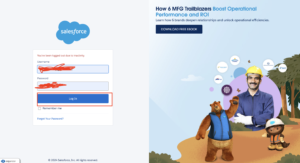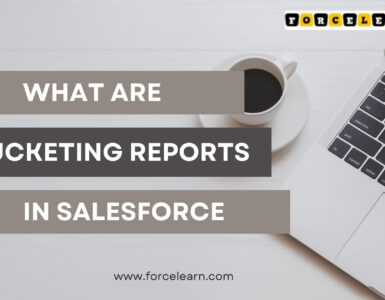In our previous blog post we had discussed about How to Find Total User Licenses in Salesforce. In these blog post we discuss about What is Fiscal Year in Salesforce
Contents
What is Fiscal Year in Salesforce
Salesforce, a fiscal year is an essential component that helps organizations track and manage financial data over a specified period, typically a year. While some companies follow the calendar year others may follow a custom fiscal year based on their business cycle. By setting the fiscal year in Salesforce, businesses ensure that their reporting, forecasting, and financial operations align with their specific accounting periods.
Standard vs. Custom Fiscal Year
Standard Fiscal Year
A standard fiscal year in Salesforce follows the Gregorian calendar, starting on January 1st and ending on December 31st. This is the default setting in Salesforce and works well for businesses that align their financial cycles with the calendar year.
When to Use Custom Fiscal Year
For businesses that do not follow the calendar year for financial reporting, a custom fiscal year can be configured. Custom fiscal years allow organizations to define their fiscal periods based on their specific requirements, such as starting in April or July, to match their internal processes or industry standards.
How to Configure Fiscal Year in Salesforce
Step-by-Step Guide to Setting Up a Standard Fiscal Year
Login to Salesforce Account

Click Gear icon Navigation to Setup

Search Quick find box in fiscal year

Configure to fiscal year



Set Start date and Name


Save

Standard Fiscal Year Setup: In-Depth
Benefits of Using Standard Fiscal Year
- Simplicity: Ideal for businesses that follow the calendar year, making it easier to configure.
- Built-in Support: Salesforce’s native features like reporting and forecasting are pre-configured for a standard fiscal year.
Common Use Cases for Standard Fiscal Year
- Small businesses that align their accounting with the calendar year.
- Companies operating in regions where the fiscal year is legally aligned with the calendar year.
Custom Fiscal Year Setup: In-Depth
Why Choose a Custom Fiscal Year?
Many companies prefer a custom fiscal year because it aligns more closely with their industry or internal financial cycles. For instance, retail businesses often prefer to align their fiscal year to match peak sales seasons or product launches.
How Custom Fiscal Year Impacts Reporting and Forecasting
Custom fiscal years can significantly impact how reports and forecasts are generated. When using a custom fiscal year, all reports and dashboards adjust to the custom periods, offering insights aligned with the company’s actual financial cycle rather than the calendar year.
Fiscal Year Impact on Salesforce Reports
How Fiscal Year Settings Affect Data
Once a fiscal year is set, all reports, dashboards, and forecasts adapt to the selected period. For instance, if your fiscal year starts in July, Salesforce will generate reports that span from July to June, providing data insights based on the fiscal year instead of the calendar year.
Optimizing Reports with Fiscal Year Configurations
To ensure accurate reporting:
- Always align the fiscal year with your business cycle to avoid discrepancies in data.
- Customize reports to reflect fiscal quarters and periods accurately.
Fiscal Year in Forecasting
Aligning Forecasting Goals with the Fiscal Year
Aligning your fiscal year with Salesforce’s forecasting features ensures that your financial goals and sales projections match the reporting periods. This allows businesses to predict sales and revenue more accurately for each fiscal period.
Salesforce Forecasting Features and Fiscal Year
Salesforce offers a robust forecasting system that can be adjusted based on your fiscal year, ensuring that all data, from closed deals to pipeline management, aligns with your chosen financial timeline.
Fiscal Year and Business Alignment
Importance of Aligning Fiscal Year with Company Objectives
Choosing the correct fiscal year is more than just an administrative task. It helps ensure that financial reporting, goal setting, and company objectives are aligned. This becomes particularly crucial in industries where revenue fluctuates seasonally.
Industry-Specific Fiscal Year Considerations
Some industries have established fiscal periods that deviate from the calendar year. For example, in the education sector, the fiscal year often starts in July to align with the academic year.
Best Practices for Managing Fiscal Year Changes
Handling Mid-Year Fiscal Year Adjustments
Changing the fiscal year mid-cycle can be tricky but sometimes necessary. It’s important to back up data and communicate with your team before making such changes to ensure data integrity.
Ensuring Accurate Data During Fiscal Year Changes
When adjusting the fiscal year, always cross-check reports and forecasts to prevent any data misalignment. It’s also a good idea to conduct a test run before finalizing the settings.
Pitfalls to Avoid with Fiscal Year Settings
Common Mistakes and How to Avoid Them
One common mistake is failing to update reports and dashboards after changing the fiscal year. This can lead to inaccurate data and confusion across teams.
Overcoming Data Misalignment Issues
To avoid data misalignment, ensure that the fiscal year is set before any reports or forecasts are generated. This will save time and ensure the accuracy of your data.
How Fiscal Year Affects Opportunity and Pipeline Management
Aligning Opportunities with the Fiscal Year
Salesforce’s opportunity management tools allow businesses to align sales opportunities with their fiscal year. This ensures that revenue and deal projections match the company’s financial reporting periods.
Best Practices for Pipeline Forecasting
To maximize pipeline efficiency, use custom reports that reflect your fiscal periods. This allows you to monitor sales performance accurately throughout each fiscal quarter.
Fiscal Year and User Permissions
Who Can Change Fiscal Year Settings?
Only Salesforce administrators with the necessary permissions can change fiscal year settings. This ensures that fiscal year changes are intentional and authorized.
Importance of Restricting Access
It’s crucial to limit who can make fiscal year changes. Unauthorized changes can lead to confusion and data inaccuracies.
Fiscal Year and Salesforce Integrations
How Fiscal Year Impacts Integrations with Other Tools
When integrating Salesforce with other systems, ensure that the fiscal year settings are synced across platforms. This ensures consistency in reporting and data accuracy.
Best Practices for Syncing Fiscal Year Across Systems
Always align fiscal periods when setting up integrations. This prevents mismatches in data between systems, which could affect financial reporting.
Custom Fiscal Year Considerations in Multi-National Companies
How Multi-Country Operations Handle Fiscal Year Differences
For multi-national companies, fiscal years may vary by country. Salesforce allows for multiple fiscal year setups, ensuring that each region operates according to local financial reporting standards.
Setting Up Country-Specific Fiscal Years in Salesforce
By using custom fiscal years, organizations can manage regional financial differences effectively, ensuring that each business unit has accurate data for its fiscal reporting.
Conclusion
Understanding and configuring the fiscal year in Salesforce is critical for accurate financial reporting and business operations. Whether you use a standard or custom fiscal year, aligning this setting with your business goals ensures that your data, reports, and forecasts are meaningful and actionable. By setting up your fiscal year correctly, you can optimize everything from opportunity management to forecasting, keeping your business on track for financial success.
We want to more about What is Fiscal Year in Salesforce Click Here
FAQs
Can I change my fiscal year mid-year?
Yes, you can change the fiscal year mid-year, but it requires careful planning to ensure data accuracy and prevent reporting issues.
What is the difference between a fiscal year and a calendar year in Salesforce?
A fiscal year can differ from the calendar year based on a company’s financial reporting preferences. The calendar year runs from January to December, while the fiscal year can start in any month and run for 12 months.
How do fiscal year settings impact reporting in Salesforce?
Fiscal year settings determine how reports, forecasts, and dashboards are generated. Changing the fiscal year alters how data is displayed and analyzed.
Can I use both standard and custom fiscal years in the same Salesforce org?
No, Salesforce allows either a standard or a custom fiscal year in a single org. You must choose one.
What happens if I don’t set up a fiscal year correctly?
Incorrect fiscal year setup can lead to inaccurate reporting, data misalignment, and challenges in forecasting.
In our next blog post we will discuss about How to Setup Holidays in Salesforce








Add comment